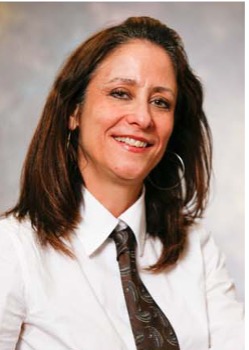Joan Kaufman, PhD
Chief Executive Officer and Co-founder

Dr. Kaufman received her Ph.D. in Clinical Psychology from Yale University where she served on faculty in the Department of Psychiatry from 1998-2015. In 2015 she was recruited to Baltimore to serve as Director of Research at the Center for Child and Family Traumatic Stress at Kennedy Krieger Institute (KKI). She also held an appointment as a Professor of Psychiatry at Johns Hopkins School of Medicine. Dr. Kaufman left KKI and academic medicine in August of 2022.
Dr. Kaufman’s research was predominantly in the area of child abuse and neglect, spanned from neurobiology to social policy, and used tools from psychology, genetics, and neuroscience to understand resilience and mechanisms of disease risk associated with early adversity. She received consistent funding from the National Institute of Health for her research, and she published over 100 peer-reviewed professional articles and book chapters. She also authored the book Broken Three Times: A Story of Child Abuse in America (Oxford University Press).The book is a narrative non-fiction story that follows one family through the child welfare system, with each chapter providing launching points for discussing state-of-the-art policy, practice, and scientific updates.
Dr. Kaufman is also first author on the paper-and-pencil KSADS child psychiatric diagnostic interview which has been translated into more than 30 languages, and she served as co-Principal Investigator on the grants funded to update the KSADS to the web-based computer-administered format. As one of the principal developers of the KSADS, Dr. Kaufman has served as a consultant on numerous federally-funded, and industry-sponsored child psychiatric clinical trials.
Kenneth Kobak, PhD
Chief Operating Officer and Co-Founder

Dr. Kobak has been conducting research on computer applications in psychiatry for over 25 years, including computerized assessments of adult and adolescent psychopathology, computer-administered psychotherapy, web-based clinical training and education,
and use of mobile devices to enhance treatment compliance and treatment outcomes. These studies have made a substantial contribution to the published literature in the field.
Dr. Kobak earned a Ph.D. in counseling psychology in 1996. While managing a clinical trials research unit at the University of Wisconsin - Madison Dept. of Psychiatry, he pioneered development of several computer-administered
rating scales that are widely used in clinical drug trials today. He founded Research Training Associates, a consultancy group using new technologies for training raters to improve reliability and validity in clinical trials.
In 2002 Dr. Kobak helped launch MedAvante, which provides remote, centralized clinical ratings in clinical drug
trials. Since 2008 he has led the Center for Telepsychology which provides on-line continuing education on evidence-based
psychotherapy treatments. Dr. Kobak has had continuous NIH funding since 2002 and was Principal Investigator on the four
NIH grants received for the development of the web-based KSADS-COMP child psychiatric diagnostic tools.
Dr. Kobak continues to leverage his scientific expertise and interests to stay at the forefront in research on
computer applications in psychology.
Alison Deep, MCA
Chief Technology Officer and Co-Founder

Mr. Deep brings over 23 years of extensive experience in software development and systems integration, leading diverse projects and adopting cutting-edge technologies. His expertise spans clinical research, pharmacogenomics, life science research, biopharmaceutical marketing, and managed health care. For the past nine years, he has been at the forefront of the KSADS program and SBIR grants, serving as the principal architect of the KSADS-COMP application.
In his current role as Chief Technology Officer, Mr. Deep is responsible for defining strategic direction, overseeing technical execution, and managing operational activities. He excels in leading large-scale, complex projects that necessitate precise coordination of processes, personnel, and technological tools. Mr. Deep has been instrumental in developing new program management standards, policy frameworks, cybersecurity protocols, risk management strategies, internal audits, compliance measures, change management processes, and efficiency improvements for project delivery. Under his leadership, the organization is on track to achieve GDPR and 21 CFR Part 11 compliance (currently under review).
Mr. Deep's educational background includes a Master’s degree in Computer Applications (MCA) and a Bachelor of Science in Statistics from Madras Christian College. He also holds a postgraduate diploma in Software Engineering and Systems Management from the National Institute of Information Technology.